While Tales of Maj’Eyal is one of the oldest, richest roguelikes available, this classic still manages to impress in its forward-thinking design for newcommers.
Type: Single-player
Genre: RPG, Rogue-like, Turn-Based
Developer: Netcore Games
Publisher: Netcore Games
Release date: 31 December, 2012


Tales of Maj’Eyal, much like the abbreviation ToME, is like a magical, ever-expanding volume that continues to thrive amongst its niche community for the last twenty-one years (or thirty if you go back to its Angband roots.) Even with nearly twenty hours of experience, there is absolutely no way to reasonably convey the total amount of depth across all thirty-five individual classes. Instead, this review would be more useful to think of it as an overview along with illustrating the many good times in store along with its dated blemishes. Afterwards, you can decide whether or not this game is for you because ToME is open source software, and, like upon opening a book to the first page, your adventure lies all before you waiting to be told.
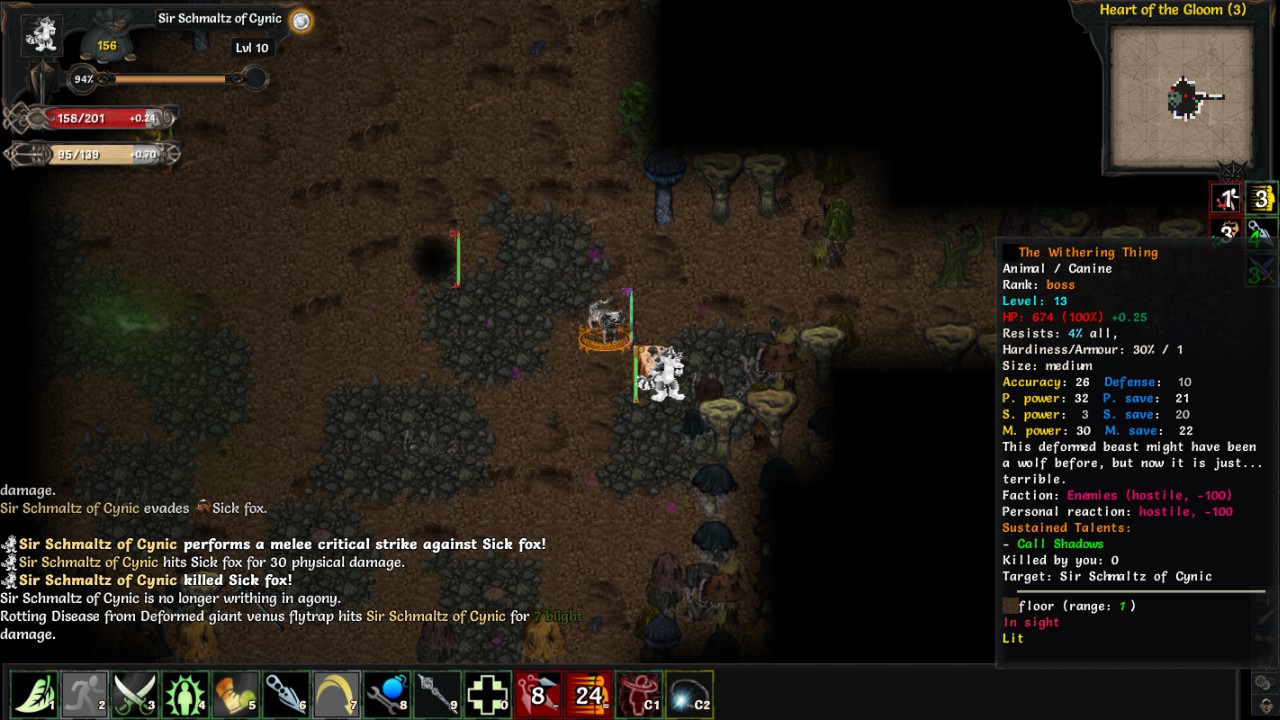
(Original artwork by Sephyfluff.)
A Fair Exchange When Dealing with the Dark One
While perhaps many retro-enthusiasts—that’s fancy-talk for old people with a catchy title—are likely familiar with open source games, it would be beneficial to explain the business model behind ToME because it mixes both old and new ideas. The game itself and the T-4 engine are completely free-to-play and the version available on the creator’s website is exactly the same version as on Steam or GOG. While all versions offer some integration into the social space from the developer’s website, the game itself is a completely single-player experience with some server-wide rewards or little boasts of each individual player’s accomplishments. Everything else that you can purchase is additional content, but not everything is necessary.
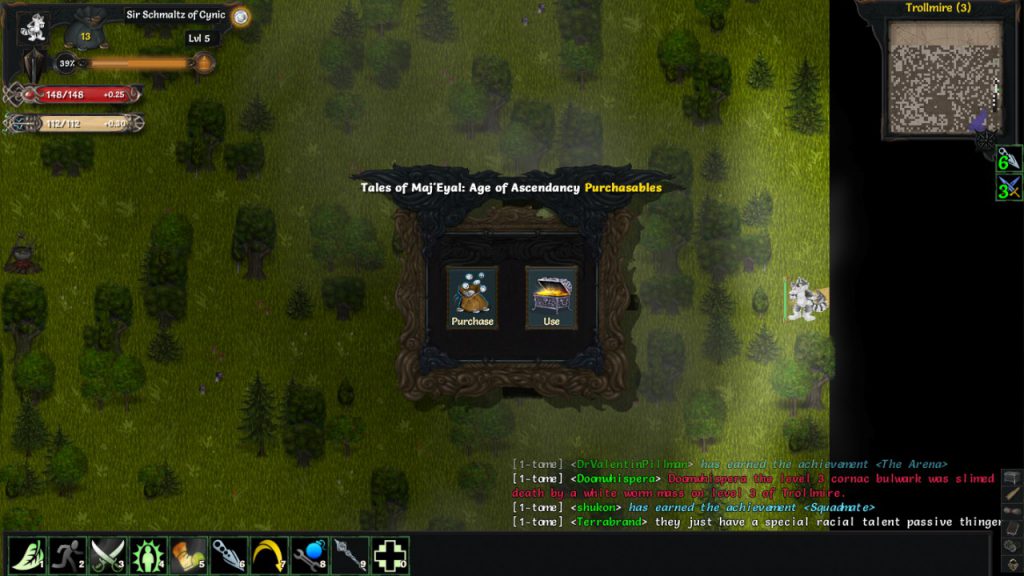
What you’re paying for, if you want to appease the Dark God, are the donation rewards (10 Voratun coins for every 1€ spent) or the three expansions if you get the Collector’s Edition. Regardless of wherever you play, you can purchase these extra offerings through donation rewards or flat purchases on the website or elsewhere. Besides the expansions, the game offers non-pay-to-win cosmetics such as character sprites, server-wide boosts, and other tacky stuff. (Also, as I have demonstrated, you can freely add your custom sprites at no extra charge.) Perhaps the most hilarious items are the “pay-to-die” options where you can kill off your character because you can. None of these rewards affect the game’s balance, and even finding the storefront can be difficult if you don’t know which hyperlinks to click. However, all these little things can be completely ignored as the expansions are the real source of worthwhile content, which you can purchase with those donation tokens.
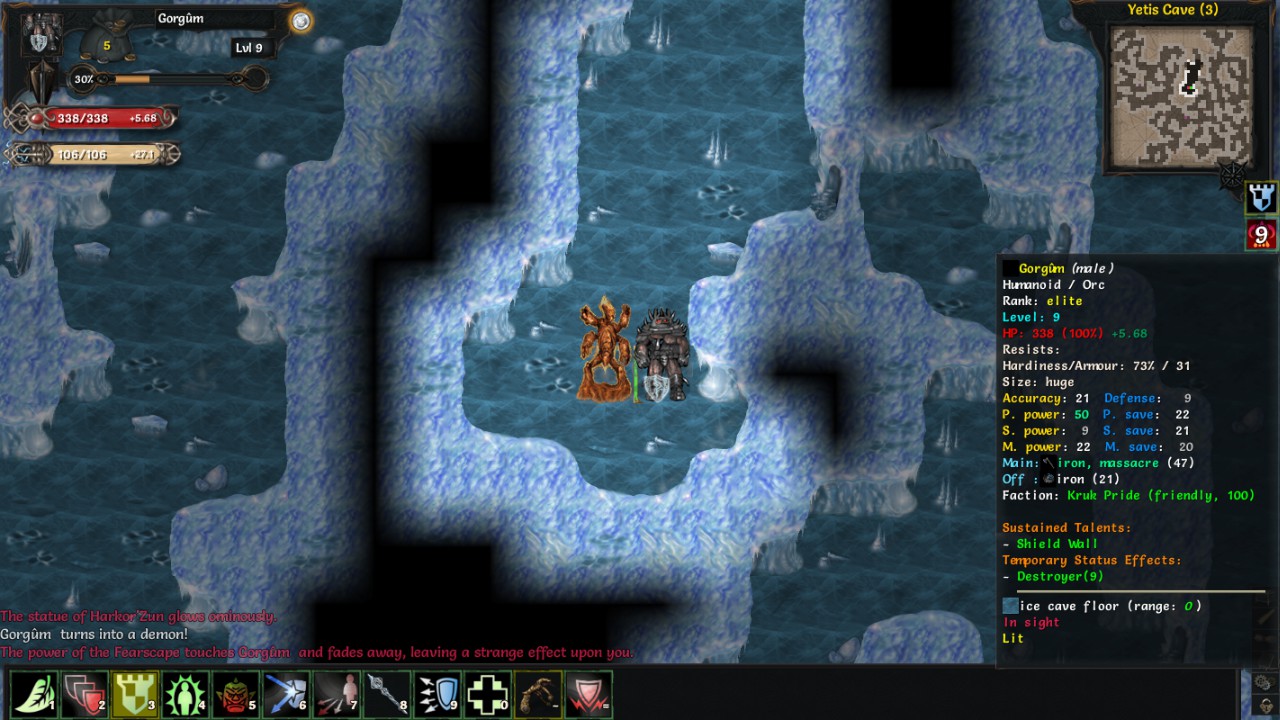
Now out of the three expansions, Embers of Rage is the only one that offers a completely new campaign. Ashes of Urh’Rok and Forbidden Cults offer new areas, new enemies and bosses, new lore / side-stories as well as new class options. However, as simple as those additions sound, these classes are not simple reskins of pre-existing classes; each one brings with them their own unique mechanics and playstyles. For example, the Demonologist item enchantments is unique, yet it’s also way less gratifying than the Doombrigner’s regeneration from its own fiery carnage. Meanwhile, the Forbidden Cults classes focus solely on a new insanity element that lets you summon cosmic horrors or harness the chaotic effects of entropy. (Have I mentioned how awesome these classes sound?) While you can compare some of these classes to their counterparts, each one plays differently enough to enjoy learning how to master them, even when you’ll often find yourself dying along the way.
Old Habits Die Harder at Every Turn
While you might expect ToME to play and feel dated, which is certainly true due to the fact that this game is older than me, it’s also surprising how often this game is forward-thinking and accessible for modern audiences. Amongst all the traditions and innovations, ToME strikes the right balance for everyone that I could easily recommend this game as an entryway into other modern or classic roguelikes.
When you strip away all the tat, ToME is as traditional as you can get with roguelikes without the ASCII art-design similar to Caves of Qud. The entire game is turn-based on a tile-based grid with randomized layouts—not the overworld, only the “worlds/dungeons”—as well as being built on the foundation of permadeath. If you ignore the various RPG statistical mechanics, additional storytelling and other quality of life conveniences, then you’ll quickly realize that ToME plays pretty much like Rogue that it inherits most of the same problems. The more interesting elements come from how the game deviates from those shared origins.
Permadeath has long been vilified as difficulty for the sake of being difficult at best and as needless padding at worst. Even for games outside of this genre, many people shun the idea because they don’t like losing progress when learning from their mistakes, so they turn it off out of fear. Not the fear and the risk of death, which is the intended consequence, but the fear of further inconvenience. Rarely do these same people ever get out of that comfort zone on their own, and some, like my former self, view every mistake as something to undo by a quicksave. Roguelikes, however, teach players that mistakes are on a scale from minor slipups to a series of catastrophic errors you put yourself into knowingly or not. Improvising solutions under distress, rather than perfecting yourself, is a life-skill you apply beyond one game, and that lesson is the real value of permadeath.
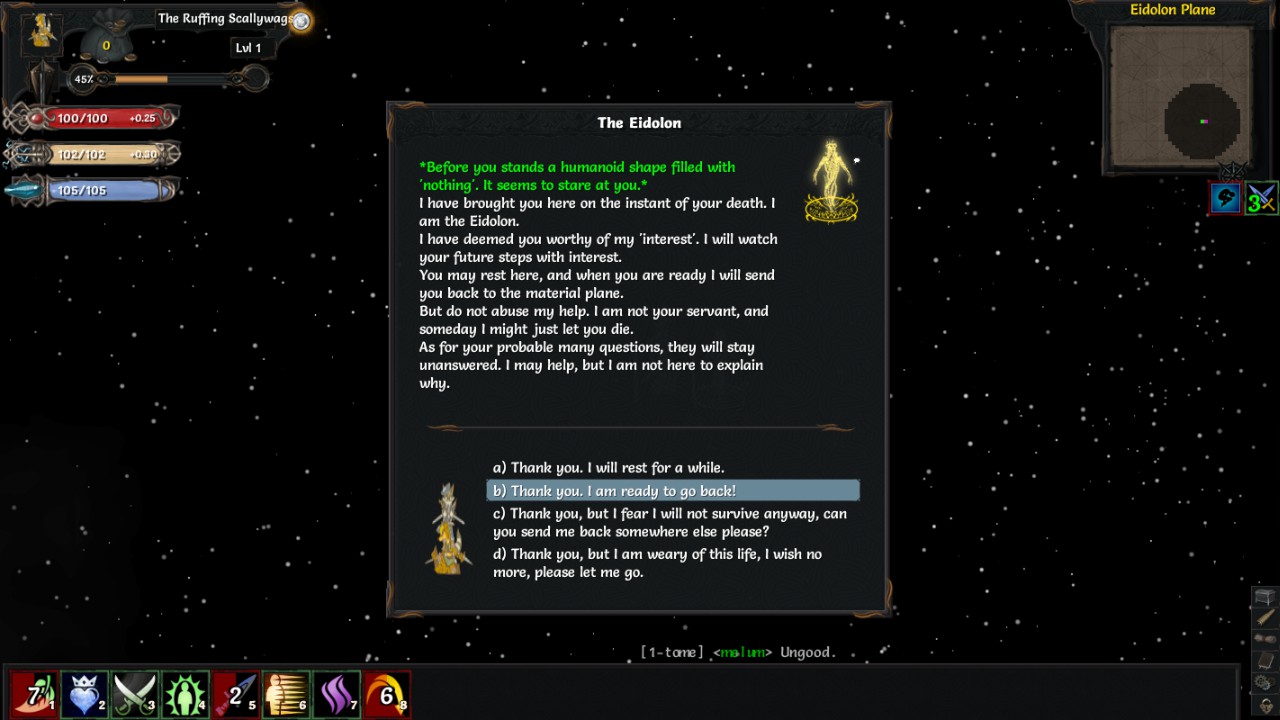
(Original artwork by casual d-hole.)
The reason for highlighting this value is that, out of all roguelikes and roguelites that I have played, ToME may have my favorite implementation because it teaches this lesson so well by one option. When you create a character, you are given the usual percentage-based buffs and debuffs to make the game easier or harder to your liking. You are also giving three options for permadeath: Roguelike is what you would expect whereas Exploration disables it completely; Adventure mode (the default option,) however, works off a limited lives system. Instead of starting off with all seven lives, you earn them by reaching certain level thresholds, and, by the time you reach level fourteen, you will have unlocked five out of seven extra lives. When you have died, you will spawn in a safe area where you can either leave the area or respawn where your body is located.
You will likely have no issue getting to level ten on your first try, which gives you more than enough chances to reassess the situation or to take a hint and go elsewhere for the time being. Additionally, you are always given the Rod of Calling to warp out safely, or you could use that respawn to loot the place before escaping. The goal of these two systems is that it gives you a viable means of accepting deaths and risks as commonplace occurrences while playing, yet never removing the reminder that those chances are limited—but you also could get further to unlock more chances. The important thing is that those seven chances keeps you playing rather than restarting seven times from the start to learn the same lesson, which is a simple change in perspective that makes a world of a difference.
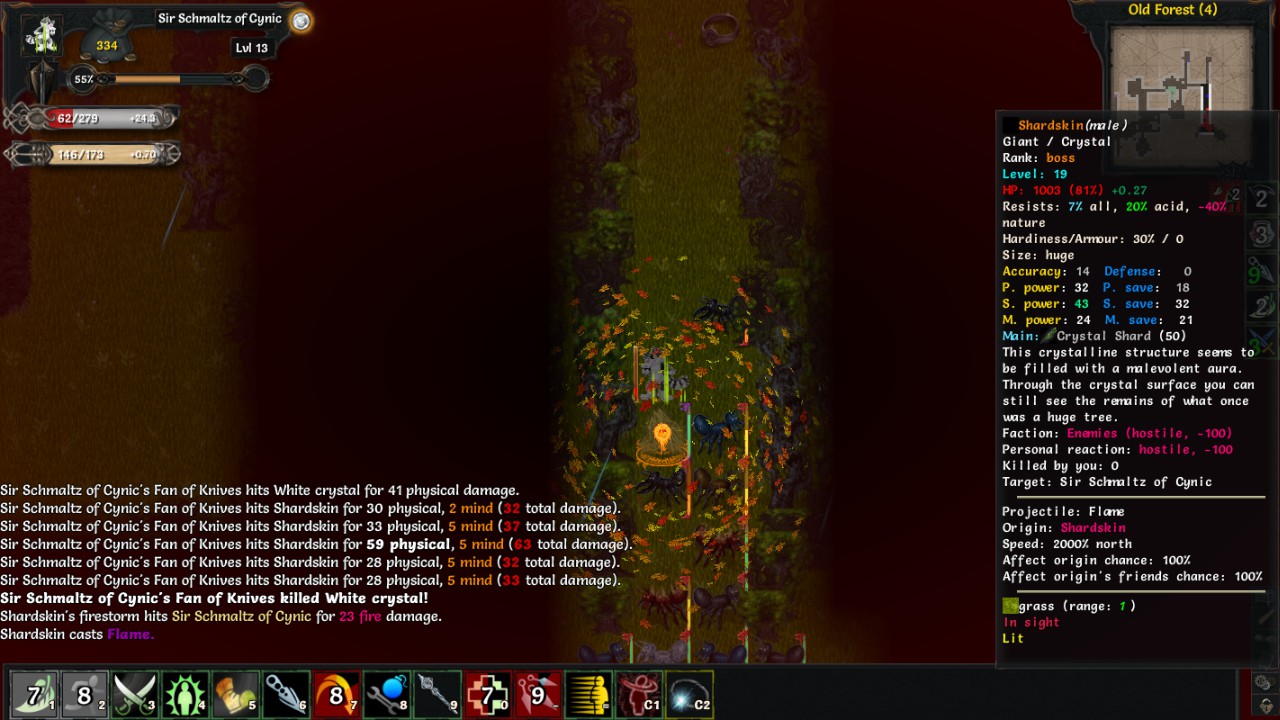
While this system may sound like a glorified extra-lives system from Pac-Man, this habit is subtly conditioning players to accept their mistakes. In addition to the lives system, there are tons of unlockable rewards ranging from new races, class options, the Arena campaign and other bits of lore to discover. These rewards are persistent incentives to keep players wandering the overworld without making the game easier, and these rewards extend the longevity of the game by introducing new playstyles when players get bored. Although if I were to criticize this system, then it would be that there isn’t enough randomness afterwards once you have unlocked everything. Even if the player goes back to disable the lives system entirely—like if you’re trying to cover as much of the game as possible on a deadline—ToME does a much better job than other roguelikes to break players out of that bad habit, and that alone is commendable.
If I were to judge ToME solely based on its overall reward structure as well as how it integrates with the learning process of the game, then this one aspect would make this game a masterpiece in its own right. It’s a shame the rest of the game will try to test your patience—and sometimes punish it.
Transmorg-it! More Than Reads the Eye
As much as I have praised this game for a variety of reasons, there’s no incantation to ward off the realization that ToME’s gameplay overstays its welcome. ToME isn’t by no means a bad game to play; however, I would consider it tedious due to the game’s focus on combat as well as the limitations of each character’s build. Even during the early game, there are dungeons that liter the screen with enemies, which gets more monotonous every time you replay those stages as the only major differences are the floor layouts. This problem gets worse if you have died and restart the game with the same character because each class has a specific build; some classes also have fewer choices for skills than others.
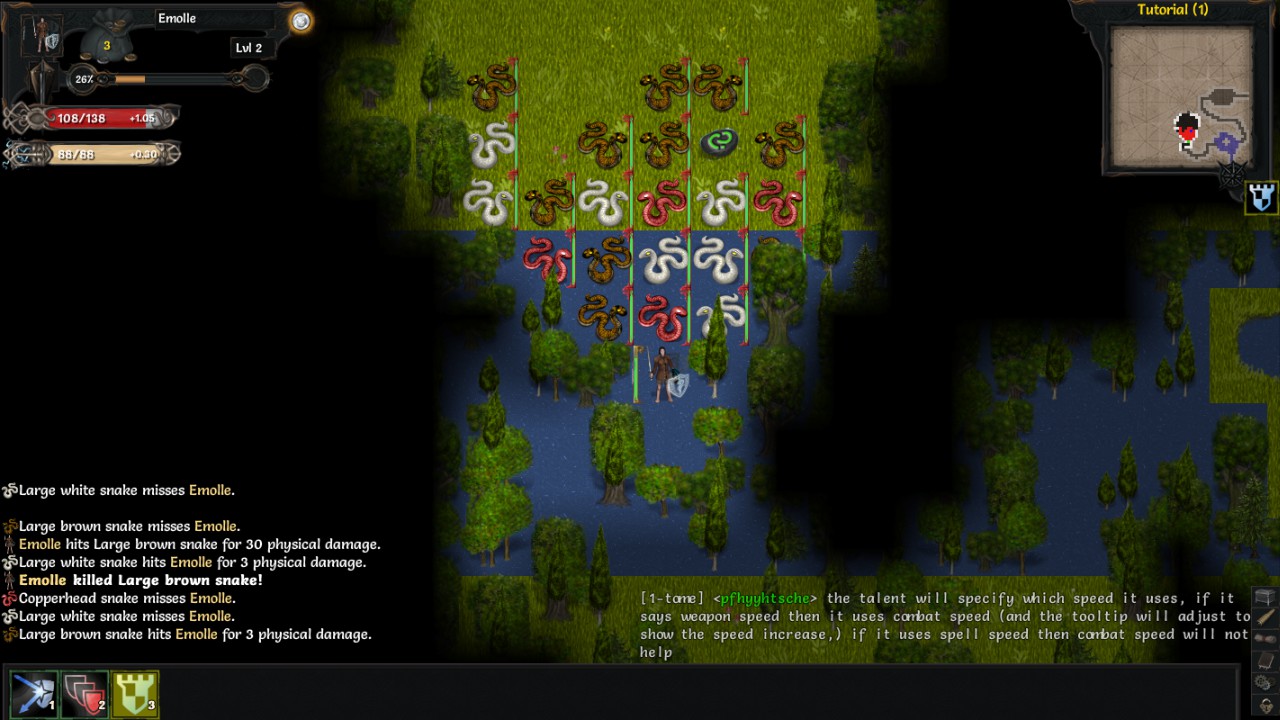
The obvious rebuttal to these problems is that you don’t have to play the same character whenever you die and you can take breaks whenever you get tired, which are both fair enough suggestions. Perhaps the simplicity of ToME’s gameplay waned on me because the other roguelikes that I enjoy supplement the combat with some non-combat skills or resource management such as in Sword of the Stars: the Pit. Those two are more personal nitpicks with the game, especially if you play the game in smaller bursts. However, the inherent problems with the UI and the constant browsing of the Transmorgify chest make those other problems far worse.
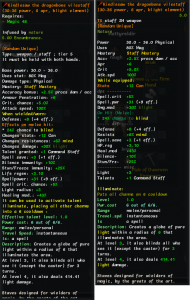
In ToME’s defense, as someone who has played his fair share of CRPGs with godawful UI problems from Planescape to Fallout, the UI here isn’t bad in the sense that it obscures necessary information. If anything, the problem is that there is far, far too much information on display, and parsing the “useful” data from the flavor text can often feel like a chore. You can somewhat mitigate this issue by tweaking the font size and the screen size, but the aptly named “Better Item Descriptions” Workshop mod goes to show how much better the layout could be. Additionally, the “Improved Combat Text” mod isn’t as necessary because chances are you are going to be attacking faster than the text messages will display, but I felt mentioning it here since some people might find it helpful. Those problems pale in comparison to the last instance, the Transmorgification chest.
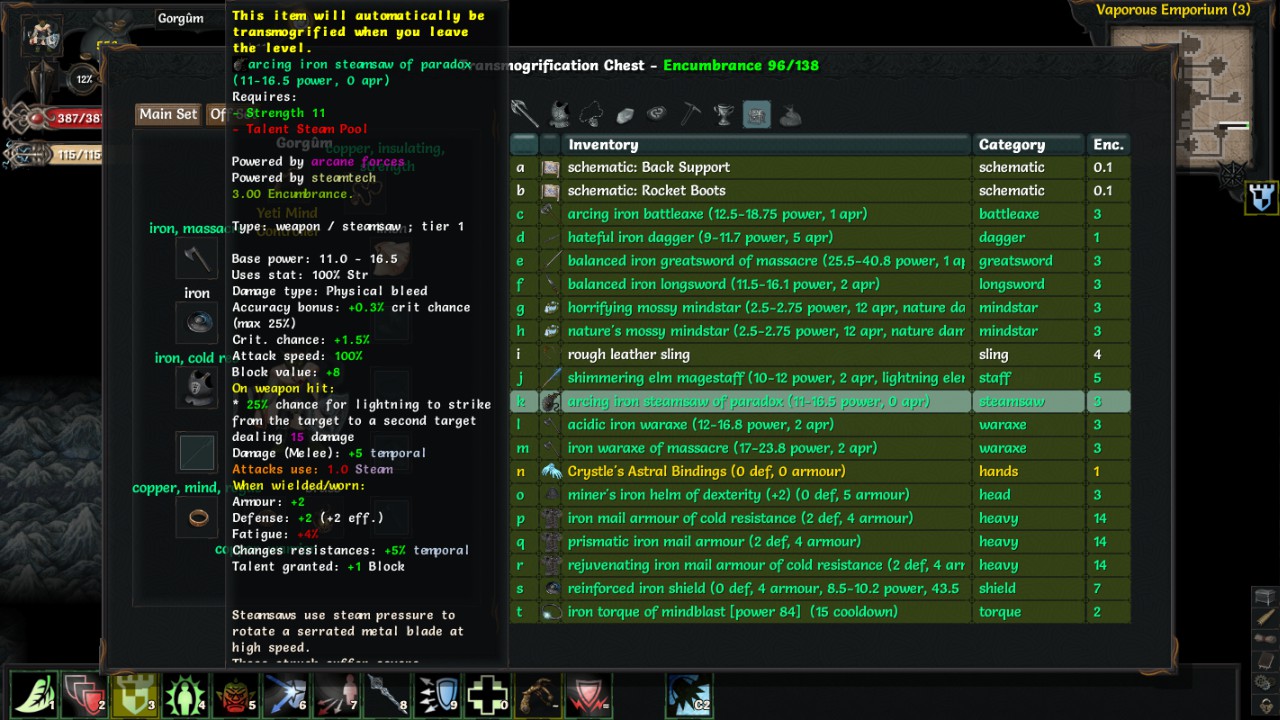
Whenever you clear out a screen within a level and before you proceed on to the next section, the game will bring up a list of items you haven’t picked up. This tool is incredibly useful because you don’t have to worry about combing every pixel of the map for some item, especially if you use the auto-explore option. If you don’t want the items, then the chest will simply turn them into gold, saving you the trouble of pawning them off at towns. However, the problem is that everything is catalogued as one giant list longer than Santa’s naughty or nice list, and I imagine ol’ Chris Kringle would get fed up at some point if all the boys and girls had stats listed next to their verbose names. The sorting categories affect only what is in your inventory, so unless you want to move everything into your inventory and then sort through them back into the chest, the whole process is one big headache.
If anything is the most likely culprit for taking up unnecessary time, then I would likely attribute the problem to the Transmorgification chest. The problem had gotten so bad that it interfered with my enjoyment with the humorous, though still very simple at heart, lore entries. These range from passing notes between two adventurers—one of which tells taller tales—or an elven poem giving the game some world-building reminiscent of J.R.R. Tolkien’s work. (Ironically, this comparison stood out to me before I did some research on ToME, so I was unaware the game was originally called Tales of Middle Earth—and the game before that also used the same source material. Small world.) Had I spent more time with the game, this problem wouldn’t stick out as sorely as it did as I imagine my mind would have filtered out a lot of the junk items as well as repeated messages, but it felt proper to forewarn anyone how bad the UI can intrude upon the small storytelling on offer.
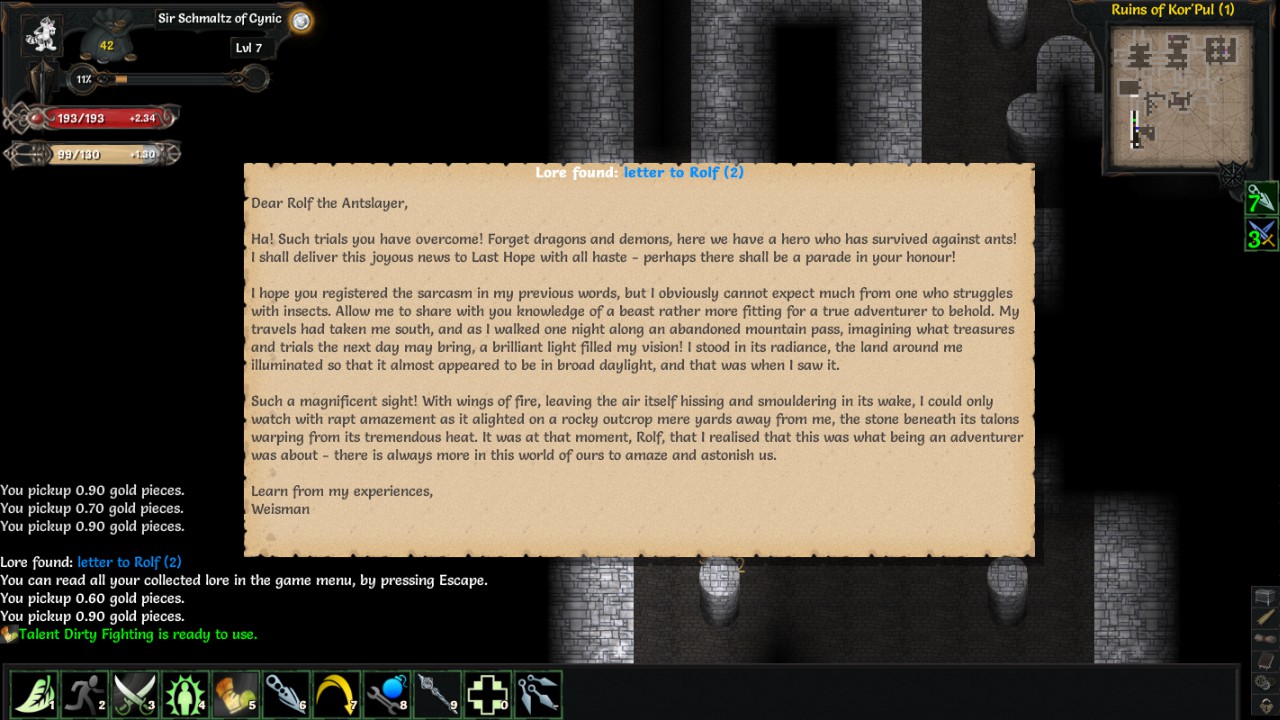
Now as much as I am harping on the legibility of the game, it’s also fair to recognize that these problems come with the turf for older games. For every small, almost illegible offense, there are many better instances such as the abilities mapped to the number keys as well as the right-mouse-button menu. Certain abilities like Disengage take some getting used to at first, but most of the on-screen information in combat is also very transparent. The point of all this is that just like any other important decision in life, you would be better off not always trying to read the fine print.
Verdict: For Whom Does the Game ToME? It ToMEs for Thee
Much like how I first started, Tales of Maj’Eyal is a game that I understand as much when I do now—so almost absolutely nothing all things considered. However, if there is one aspect I understand and respect, it is is the sheer dedication of its player-base as well as the creator himself. That feat alone is commendable all around.
Every now and then, however, one small turn of those pages might bring me closer to a deeper appreciation for this title. As they say, age begets wisdom, but as Oscar Wilde pointed out, sometimes age comes alone. In the world of Maj’Eyal, however, even when you feel alone, there’s always hundreds of other players journeying alongside you perhaps just as lost as you… Wait, there’s another expansion, already!?
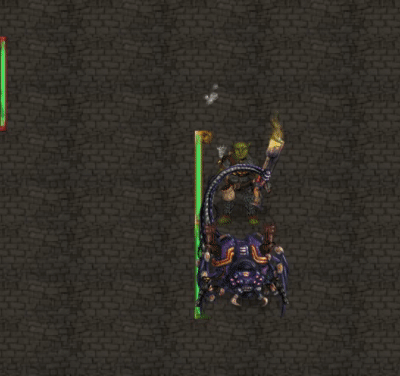

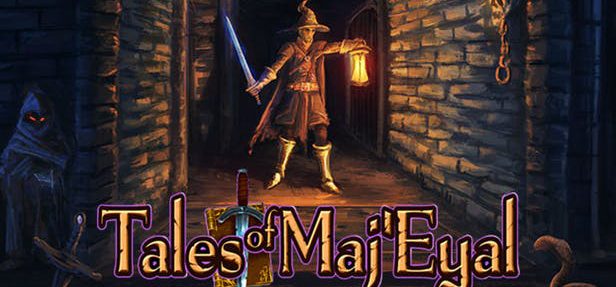









A different opinion from a different reviewer who has played this game:
As someone that has played several “modern” roguelikes with graphics, what stands out to me is the very “Blizzard-like” nature of this game’s concepts of balance and mechanics. Probably the most obvious is the overwhelming focus upon combat and point-buy character builds that are painstakingly balanced through resource use and skill cooldowns, and it has a whopping 60-skill hotkeybar like straight out of WoW. Potions are replaced with infinite-use infusions just to stop you from needing to go back to town to buy more. The transmog chest is there to stop you from needing to go back to town to sell things. The loot is also basically running the Diablo system of randomized drops of incremental rarity, although that’s par for the course among many games with RPG elements nowadays. It’s all a very “streamlined” and “balanced” system that is good for those who theorycraft best builds to squeeze another 10 DPS out, but it runs into that problem of being so “streamlined” it’s only playing one note you can’t hold for more than 30 minutes at a time. Many builds rely upon only two or three skills for basically everything (bombs and whatever your golem is doing are basically your only class features and the golem controls itself and your bombs have a cooldown of 5 turns, so while they’re powerful, your job is mostly finding something to do with the other four turns between bombs – and that’s still varied compared to some martial classes which mostly focus upon “bumping” monsters to death).